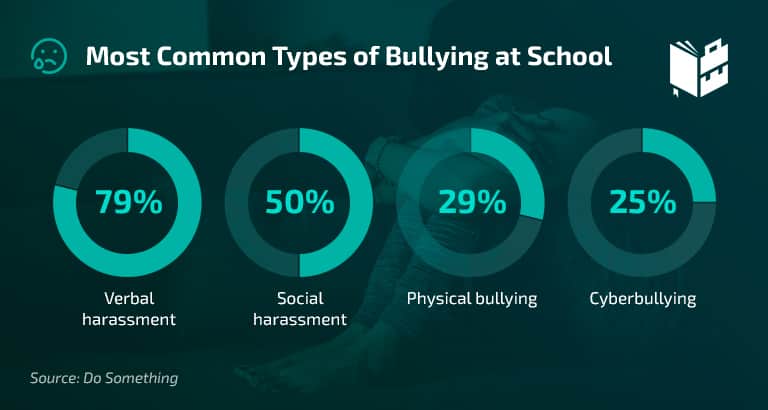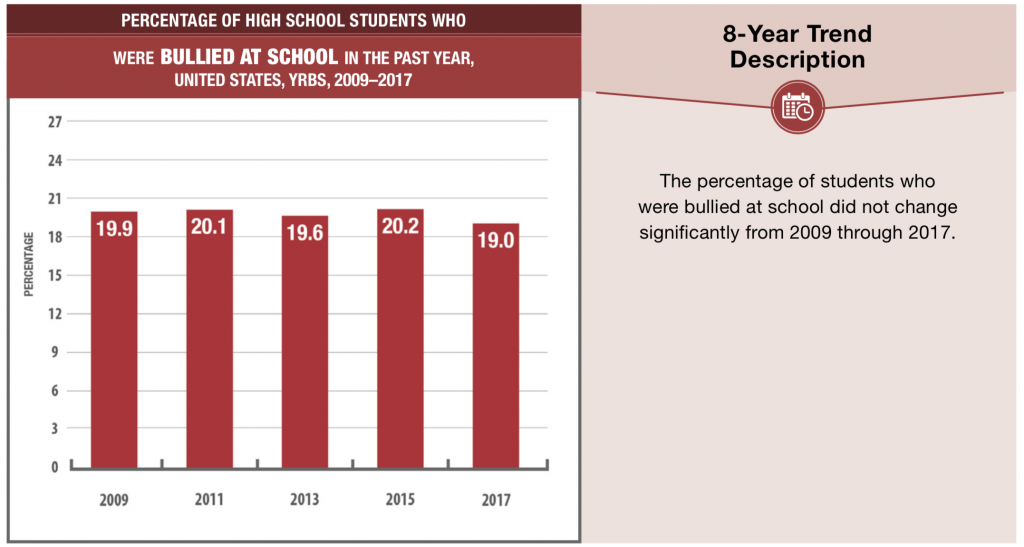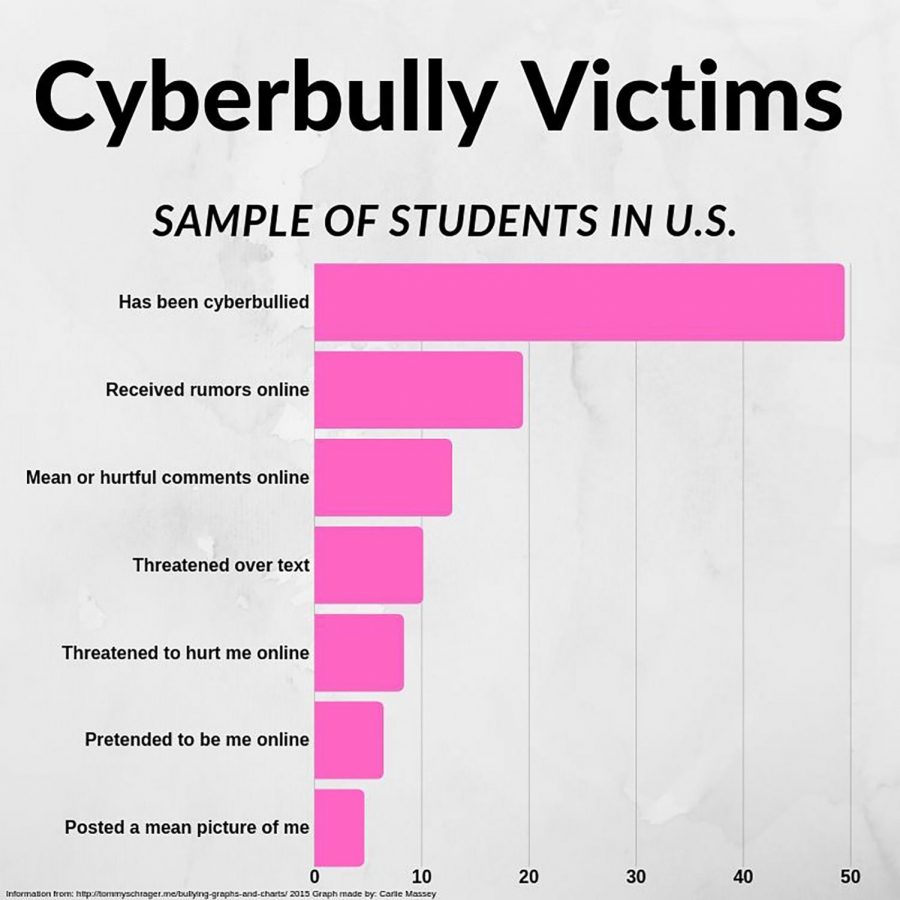Bullying has always been a problem among teenagers. It is a widespread problem that affects people of all ages, genders, and social backgrounds. Adults are no stranger to this format of aggression even if it is predominantly a tween and teen problem.
An imbalance of power between the bully and his victim is one of its most recognizable forms, but with the rise of technology, it has taken on a new shape: cyberbullying.
Cyberbullying is not only easier but can also be more pervasive and anonymous, making it difficult for parents, teachers, and even teens themselves to combat.
How to safeguard my children against bullies and cyberbullies ? When is the time right to act?
In this article, we will explore the various forms of harassment, delve into the numbers behind bullying and cyberbullying, and discuss the consequences of rampant persecution among teens. We will also provide resources and strategies to help prevent and overcome bullying as a whole.
1/ The many forms of bullying
Bullying is most frequently understood to be a type of peer-to-peer physical and verbal abuse that occurs in schools.
Dan Olweus offers this widely acknowledged description of bullying:
“ A person is bullied when he or she is exposed, repeatedly and over time, to negative actions on the part of one or more other persons, and he or she has difficulty defending himself or herself. ” (1)
Nevertheless, there are several forms of aggression that must be acknowledged. Let’s dive deeper on six types of bullying that can be divided into two subtypes:
Frontal bullying : Physical, verbal and sexual.
Insidious bullying : Cyber, social and prejudicial.
A/ Frontal bullying
Physical Bullying
Physical bullying can be easier to identify and address because it often occurs in person.
It involves any form of physical aggression, such as:
- Hitting,
- Punching
- Kicking
- Tripping
- Shoving
- Pinching
- Hair pulling
- Spitting
- Theft
All Aggressive actions aren’t always bullying though.
Physical altercations, domestic violence, hazing and stalking to only name those, are outside the purview of bullying.
Verbal Bullying
This type of bullying can be difficult to address because it often occurs in public or through social media, making it more difficult to identify and track.
Verbal bullying is any type of harassment that involves words, such as:
- Name-calling
- Insults
- Teasing
- Spreading rumors
Sexual bullying
Online or in-person bullying that incorporate sexual bullying are comprised of:
- Sexual comment (jokes, rumors, name calling…)
- Sexual actions (touching, grabbing…)
- Sending sexual material (Photos, Audios, videos)
In this category, consent is key to determine if the situation involves bullying.
B/ Insidious bullying
Cyberbullying
Cyberbullying is the use of technology to harass or intimidate someone.
It can take many shapes, including :
- Social media harassment
- Spreading rumors
- Sending threatening or embarrassing messages
- Blackmailing
- Targeted hacks
Because it can happen anonymously and from a distance, cyberbullying can be especially traumatic for victims.
“ Cyberbullying is bullying with the use of digital technologies. It can take place on social media, messaging platforms, gaming platforms and mobile phones. It is repeated behaviour, aimed at scaring, angering or shaming those who are targeted. ” Unicef
Social bullying
Social bullying entails behaviors meant to damage a victim’s relationships or reputation.
The victim may be made to feel uncomfortable in public, rumors may be disseminated about them, they may be purposefully excluded from social events, or they may be shunned by a group.
It is exceptionally insidious since it includes social manipulation, in contrast to more overt forms of bullying.
Prejudicial bullying
About prejudicial bullying, the target is usually:
- Skin color
- Ethnicity
- Religious beliefs
- Sexual orientation
Prejudicial bullying frequently stems from misconceptions and anxieties that young children have about individuals who are different from them.
Any other forms of bullying might fall under this category as well.
For instance, biased bullies may engage in verbal, physical, verbal, sexual, social, and cyber, bullying toward their victims.
2/ What do numbers say?
General statistics
 Source: https://whattobecome.com/blog/bullying-statistics/ (2)
Source: https://whattobecome.com/blog/bullying-statistics/ (2)
20.2% of students report being bullied. (3)
A higher percentage of male than female students report being physically bullied (6% vs. 4%), whereas a higher percentage of female than of male students reported being the subjects of rumors (18% vs. 9%) and being excluded from activities on purpose (7% vs. 4%). (4)

Source: https://stand4kind.com/wp-content/uploads/2020/01/Screen-Shot-2020-01-23-at-1.34.52-PM-1024×547.png (5)
Of those students who reported being bullied, 13% were made fun of, called names, or insulted; 13% were the subject of rumors; 5% were pushed, shoved, tripped, or spit on; and 5% were excluded from activities on purpose. (6)
Bullied students reported that bullying occurred in the following places: the hallway or stairwell at school (43%), inside the classroom (42%), in the cafeteria (27%), outside on school grounds (22%), online or by text (15%), in the bathroom or locker room (12%), and on the school bus (8%). (7)
Cyberbullying statistics

Source: https://kilgorehsmirror.com/wp-content/uploads/2019/08/Cyberbully-Victims-1-900×900.jpg (8)
Reports of cyberbullying are highest among middle school students, followed by high school students, and then primary school students. (9)
The percentages of individuals who have experienced cyberbullying at some point in their lifetimes have more than doubled (18% to 37%) from 2007-2019. (10)

Source: https://www.broadbandsearch.net/blog/cyber-bullying-statistics?msID=56fe209c-8a9d-4528-8ab2-3b38bd2f6eed (11)
3/The Consequences of rampant harassment among teens
Bullying can have serious consequences for both the victim and the perpetrator. Victims may experience depression, anxiety, decreased academic performance, and even physical harm.
Perpetrators may also suffer from long-term consequences, including social isolation and difficulty forming relationships later in life.
Cyberbullying, in particular, can be especially damaging because it can reach a larger audience and can be difficult to escape. Victims of cyberbullying may feel constantly under attack and may struggle to find a safe space where they can be free from harassment.
A) The Immediate Effects of Bullying
The immediate effects of bullying can be severe and can impact a victim’s physical and emotional well-being. Some of the most common immediate effects include:
- Anxiety and depression
- Low self-esteem and self-worth
- Difficulty sleeping or concentrating
- Changes in eating habits
- Physical symptoms such as headaches, stomachaches, and nausea
Tweens who were cyberbullied shared that it negatively impacted their feelings about themselves (69.1%), their friendships (31.9%), their physical health (13.1%), and their schoolwork (6.5%). (12)
B) The Long-Term Effects of Bullying
While the immediate effects of bullying can be devastating, the long-term effects can be even more severe. Studies have shown that individuals who have been bullied are at higher risk for a range of negative outcomes, including:
-
Mental Health Issues
Bullying can have a significant impact on mental health, leading to an increased risk of developing anxiety, depression, and other mood disorders. Victims of bullying may also be more likely to engage in self-harm or develop suicidal thoughts.
-
Substance Abuse
Research has shown that individuals who have experienced bullying are at higher risk for substance abuse, including drug and alcohol addiction. This may be due in part to the mental health issues that can result from bullying.
-
Social and Relationship Issues
Bullying can impact a victim’s ability to form relationships and social connections. Victims may struggle with trust issues, have difficulty making friends, or struggle to maintain healthy relationships.
-
Academic and Professional Consequences
Bullying can also impact a victim’s academic and professional success. Victims may have lower grades, miss school more frequently, and have difficulty finding and maintaining employment as adults.
4/ Resources to help overcome bullying as a whole
In order to combat bullying, it’s important to understand the resources available to help overcome it.
Fortunately, there are many resources available to help prevent and overcome bullying. Here are some strategies that may be helpful:
Prevention
Prevention is key to stopping bullying before it starts. There are many ways to prevent bullying including:
- Educating people on what bullying is and how to identify it
- Promoting empathy and kindness
- Creating a positive and inclusive school or community culture.
Prevention programs can include workshops and seminars, school-wide initiatives like peer mentoring or restorative justice circles, and community events that promote kindness and inclusion.
By focusing on prevention, we can create an environment that discourages bullying and promotes positive behaviors.

Source: https://www.cdc.gov/violenceprevention/images/youthviolence/how-can-we-stop-yv.PNG?_=20077 (13)
Reporting
Reporting is an essential resource for overcoming bullying. It involves informing authorities or individuals who can intervene to stop the bullying and provide support to the victims.
Reporting can take many forms, including telling a teacher, counselor, or other school staff member, reporting the incident to a parent or guardian, or contacting law enforcement.
Reporting to School Staff
Reporting to school staff is one of the most common ways to address bullying. School staff members are trained to recognize and address bullying, and they can provide support to victims and take appropriate action against the bullies.
Students who are being bullied should feel comfortable reporting the incident to a teacher, counselor, or other school staff member.
Reporting to Parents or Guardians
Reporting to parents or guardians is another way to address bullying. Parents or guardians can provide emotional support to the victims and help them navigate the situation.
They can also communicate with school staff and work together to develop a plan to address the bullying.
Reporting to Law Enforcement
In cases where the bullying involves criminal behavior, such as physical assault or harassment, it may be necessary to report the incident to law enforcement.
Law enforcement can investigate the incident and take appropriate legal action against the bullies.

Source: https://i.pinimg.com/736x/c4/7f/de/c47fde31ada2d7922bd9ee77c37408d9–bullying-in-the-uk.jpg (14)
Conclusion
Bullying, in all its forms, is a serious problem that can have lasting consequences. Cyberbullying, in particular, has become an increasingly pervasive and anonymous form of harassment that can be difficult to address due to its anonymity and potential to reach a wide audience.
However, there are resources available to help prevent and overcome bullying. By promoting empathy and kindness, creating safe and inclusive environments, and seeking support, we can work together to combat bullying and create a better future for our youth.
Preventing and addressing bullying is a complex issue that requires a multi-faceted approach. By focusing on prevention and reporting, we can create a safe and supportive environment for all individuals.
It’s important to recognize the resources available to us and to use them effectively in order to combat bullying and promote positive behaviors.
FAQs
- What is bullying?
Bullying is intentional, aggressive behavior that is repeated over time and involves an imbalance of power or strength. It can take many forms, including physical, verbal, and relational bullying.
- What is cyberbullying?
Cyberbullying is bullying that takes place online or through digital devices, such as social media, text messages, or email. It can include sending hurtful messages or rumors, sharing embarrassing photos or videos, or excluding someone from online groups.
- How common is bullying?
Bullying is unfortunately very common, and affects people of all ages. According to a national survey conducted by the Centers for Disease Control and Prevention (CDC), nearly 20% of high school students in the United States reported being bullied on school property in the past year.
- How can I tell if my child is being bullied?
Signs that your child may be experiencing bullying include changes in behavior, such as becoming withdrawn or avoiding social situations, unexplained injuries or damage to belongings, and a decline in academic performance.
- What can I do if my child is being bullied?
If your child is being bullied, it’s important to take action to address the situation. This can include talking to your child about what is happening, documenting incidents of bullying, contacting school officials or other authorities for help, and seeking counseling or support services for your child.
- How can I prevent my child from being bullied?
You can help prevent your child from being bullied by teaching them skills for coping with conflict and promoting positive behaviors like empathy and kindness. You can also encourage your child to speak up if they witness or experience bullying, and work with schools and other community organizations to promote anti-bullying policies and initiatives.
- What are some resources for addressing bullying and cyberbullying?
There are many resources available to help address bullying and cyberbullying, including counseling and support services, online reporting tools, and community-based prevention programs. Schools and other community organizations may also have policies in place to address bullying and provide resources for those who have been affected.
Sources:
(1) Dan Olweus, Bullying at school: What We Know and What We Can Do (1993)
(2) Infographic 1 , https://whattobecome.com/blog/bullying-statistics/
(3) National Center for Educational Statistics, 2019, https://nces.ed.gov/pubs2019/2019054.pdf
(4) Ibidem
(5) Infographic 2, https://stand4kind.com/wp-content/uploads/2020/01/Screen-Shot-2020-01-23-at-1.34.52-PM-1024×547.png
(6) National Center for Educational Statistics, 2019, https://nces.ed.gov/pubs2019/2019054.pdf
(7) Ibidem
(8) Infographic 3, https://kilgorehsmirror.com/wp-content/uploads/2019/08/Cyberbully-Victims-1-900×900.jpg
(9) Center for disease control, 2019, https://www.cdc.gov/violenceprevention/pdf/yv/bullying-factsheet508.pdf
(10) Patchin & Hinduja, 2019, https://cyberbullying.org/2019-cyberbullying-data
(11) Infographic 4, https://www.broadbandsearch.net/blog/cyber-bullying-statistics?msID=56fe209c-8a9d-4528-8ab2-3b38bd2f6eed
(12) Patchin & Hinduja, 2019, https://i.cartoonnetwork.com/stop-bullying/pdfs/CN_Stop_Bullying_Cyber_Bullying_Report_9.30.20.pdf
(13) Infographic 5, https://www.cdc.gov/violenceprevention/images/youthviolence/how-can-we-stop-yv.PNG?_=20077
(14) Infographic 6, https://i.pinimg.com/736x/c4/7f/de/c47fde31ada2d7922bd9ee77c37408d9–bullying-in-the-uk.jpg